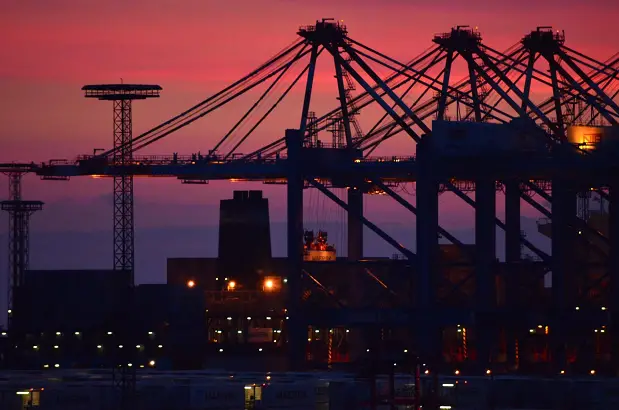It was five years ago that China’s President Xi Jinping called the nation’s Belt and Road Initiative the “project of the century.” However since then, as loan default has piled on loan default, the project has become an exercise in crisis management on a global scale.
In 2020 and 2021, Chinese financial institution had to renegotiate over $52 billion in loans according to New York-based research group The Rhodium Group. They noted this was more than three times the amount seen in the two years prior to that. The Rhodium Group now estimates China has about $118 billion in bad loans it has had to renegotiate since 2001.
Some are saying the massive construction project has the potential to become China’s first overseas debt crisis. Across the world, deteriorations in the economies of debtor countries have combined with project-specific problems to produce loan write-offs, deferred payment schedules, and interest rate reductions. Although many point out China often seeks concessions from countries on other matters, like establishment of military bases, or use of ports for military purposes, in many developing nations China targeted there is limited geopolitical significance to exploit.
In Asia, Africa, and Latin America, countries are now saddled with loans for a trade and transportation system of dubious merit going into a potential period of global economic contraction. The economic burden of continuing to pay off loans on such a massive infrastructure project with little benefit risks throwing all of those regions into a full scale debt crisis.
Nowhere is this better seen that Sri Lanka, where as its economy collapses, citizens find themselves looking at the 350m Lotus Tower that looms over Sri Lanka’s capital Colombo. One of the tallest buildings in South Asia, it was funded by loans from a Chinese State bank. However after project delays and a series of problems, most of its amenities either lie unfinished, or are not used by the public. Meanwhile a nation in economic collapse with problems too numerous to list, also has to deal with payments on loans for a massive infrastructure project the citizens have no use for.
As China has overshadowed the World Bank and IMF to become the largest source of development credit, it has come to now extend more development loans throughout the world than the 22 members of the Paris Club put together.
Sri Lanka highlights another problem. As nations collapse, China is left with the question of whether to make rescue loans and try to salvage the governments, so they may continue to make loan payments, or whether to accept defaults by collapsed governments, leaving little chance of recovering their loan principle.
Bradley Parks, executive director of AidData at the College of William and Mary in the US notes that rescue loans are often a temporary solution to a much bigger problem, saying, “I think Beijing is now learning that in some cases the fundamental problem is not liquidity but solvency.”
He notes that in Sri Lanka, “Their effort was a spectacular failure. So, the big question that Beijing needs to answer is whether it wants to be in the rescue lending business in the long run.”
And the question is not only if China wants to enter the rescue loan business, but to what degree the nation is responsible for the defaults it is creating. In May, German Chancellor Olaf Scholz noted of China’s loans to African nations, “There is a really serious danger that the next major debt crisis in the global south will stem from loans that China has granted worldwide.”
Even worse, the contagion might not stop merely at the countries China has lent to. Looking at the total portfolio of Chinese loans and the financial states of the nations they were issued to, Ayhan Kose, head of the World Bank’s forecasting unit said, “These are all material risks and if they materialize at the same time it will be a perfect storm for the global economy. So, of course, we are worried that more countries will be unable to roll over their debts.”
AidData has uncovered tens of billions of US dollars China has issued as “rescue loans” to debtor countries, which have allowed those countries to continue to service their loans and avoid defaults. Countries it has identified as receiving such loans have been Pakistan, Argentina, Belarus, Egypt, Mongolia, Nigeria, Turkey, Ukraine and Sri Lanka,
Chen Zhiwu, professor of finance at the University of Hong Kong has noted China may be looking now to reduce its exposure through downsizing the Belt and Road initiative. He notes, “Especially given the changed geopolitical landscape after [Russia’s] invasion of Ukraine, China is significantly downsizing the BRI. I have not seen the BRI being mentioned so much at all in mainstream Chinese media. It is not the same BRI as a year or two ago.”
As one example analysts cite Sri Lanka, where China has now abandoned most of the Belt projects. The massive port project in Gwadar, located in the strategically significant Strait of Hormuz has been mothballed. A company boss who chose to remain anonymous said of the port, “There is almost nothing going on in terms of building. We keep on waiting for China’s promises to follow through but there has been very little so far.”
The question now becomes, will China be able to extract itself from these failing projects without causing a global meltdown, beginning with the destitute nations it will demand pay back loans for projects they will likely never see finished. As the economies of the world decline, the clock ticks down.

